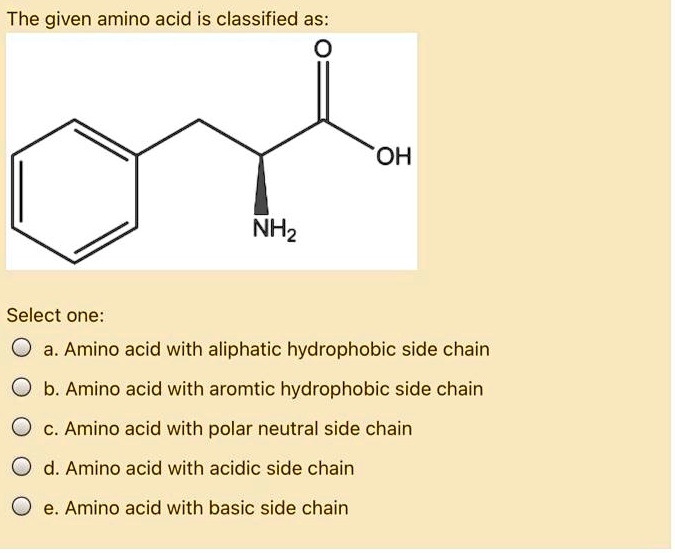
Non-polar amino acids can be further split into alkyl or aromatic, while the polar amino acids can be split into neutral, acid, or basic.Amino acids are organic compounds that contain the functional groups amino (–NH₂) and carboxyl (–COOH), as well as a side chain (R group) unique to each amino acid. Broadly, the twenty common amino acids can be split into non-polar amino acids (hydrophobic) and polar amino acids (hydrophilic). Some of the common chemical properties used to classify amino acids include the charge of the side chain, whether it is acid or basic, and whether it has hydrogen bonding ability.

These variations can help to order and classify amino acids into groups with common characteristics. There are many different chemical properties of amino acid side chains that can be classified. VIDEO: Amino acid classification based on chemical properties

Consequently diet becomes a necessary source of these amino acids. For example, if the immune system is compromised the body may struggle to produce certain amino acids. These are amino acids that are normally considered as non-essential although during periods of stress they may become semi-essential. These are called semi-essential amino acids. There is also a third category of amino acids classified based on nutrition. A balanced diet usually ensures that the body acquires enough essential amino acids Conversely, essential amino acids must be acquired from food sources. There are eleven non-essential amino acids. These are classified as non- essential amino acids. Some amino acids can be synthesised by the body. One of the most common ways to classify amino acids is based on human health requirements. Hair Loss and Prevention with amino acidsĪmino acid classification based on human nutrition.Top Vegetarian Sources of Essential Amino Acids.Top Animal Sources of Essential Amino Acids.


 0 kommentar(er)
0 kommentar(er)
